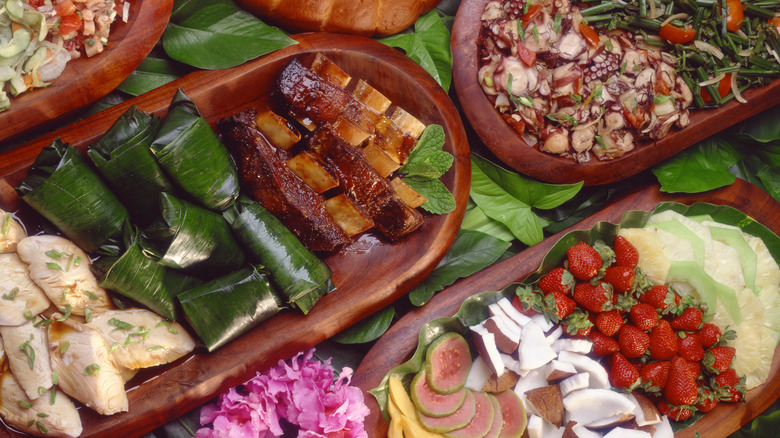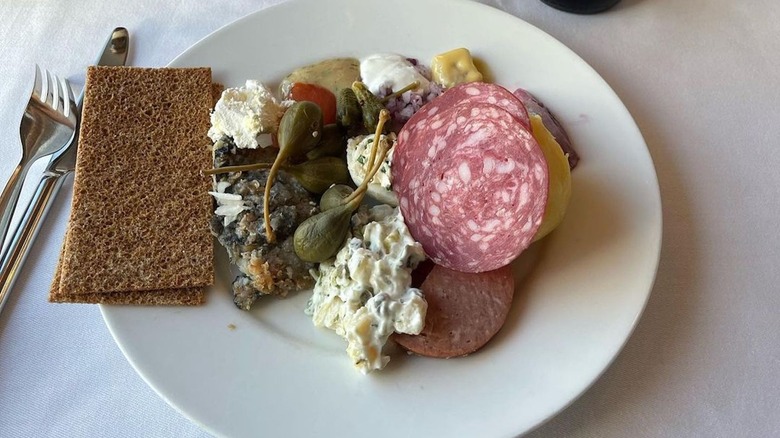The Significant Differences Between A Buffet And Smörgåsbord
Feasting on a delicious prepared meal made by someone else is great, but there are truly few things more satisfying than piling your favorite foods onto your own plate. Buffets and smörgåsbords are two popular, communal, all-you-can-eat food service styles that offer multiple noshes for guests to choose from on their own. While these terms are sometimes used interchangeably, there are actually a few major differences between them.
Take their origins, for example. A smörgåsbord displays a variety of Scandinavian classics, such as pickled herring, smoked salmon, cheeses, meats, bread, and spreads. The word smörgåsbord comes from two Swedish words: smörgås, which translates to "open-faced sandwich," and bord, which means "table." The tapas-esque convention dates back to 14th Century Sweden and has since become a chief element of Swedish culinary culture.
At a buffet, on the other hand, guests serve themselves from a variety of dishes that have been set out on a table. The French term "buffet" simply means a sideboard table or a place where refreshments are served. In the 12th Century, a bufet was a low bench or stool, and centuries later, buffets came to be known as self-served meals.
Buffets and smörgåsbords are not one and the same
The layouts of buffets and smörgåsbords are also quite distinctive from one another. In a traditional buffet, for instance, stations of foods, spanning from hors d'oeuvres to entrées to desserts, are set out in a linear fashion with a clear beginning and end. Smörgåsbords, on the other hand, have a circular arrangement on which the foods are presented in groups based on their flavors and textures. The smörgåsbord made its official American debut at the New York World's Fair in 1939, where patrons of The Three Crowns restaurant were mesmerized by the revolving table.
Additionally, the selection of dishes sometimes differs between the two. Buffets typically offer a hodgepodge of cuisines while smörgåsbords are primarily focused on Swedish fare. There's also an etiquette for the order in which the food should be consumed in a smörgåsbord. Pickled herring is always eaten first and is often accompanied by beer or a swig of Aquavit, a Scandinavian distilled spirit. From there, you can dive into fish and seafood, cold meats and pâté, warm meats such as meatballs and lamb, cheeses, and last but not least, sweets and a cup of after-dinner coffee.
Whether you prefer a time-honored buffet or smörgåsbord, helping yourself is always a taste adventure worth the price.

